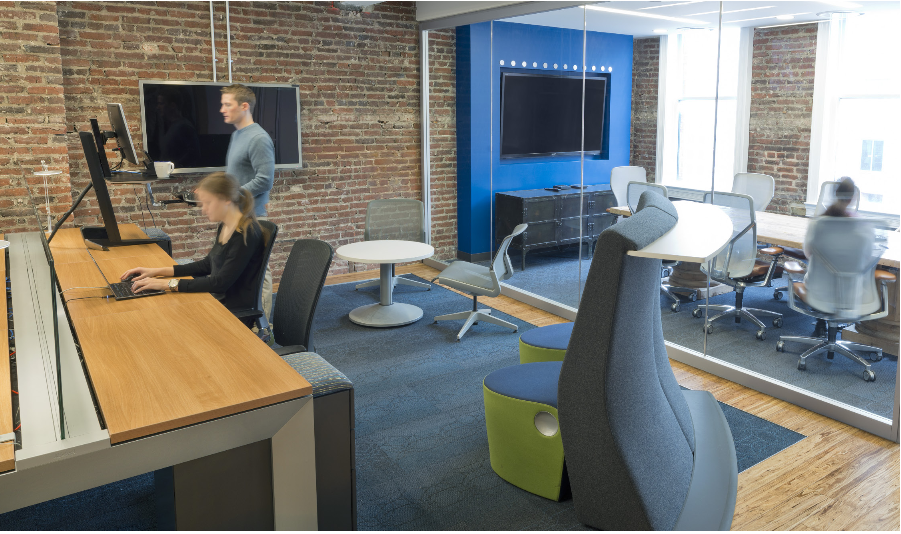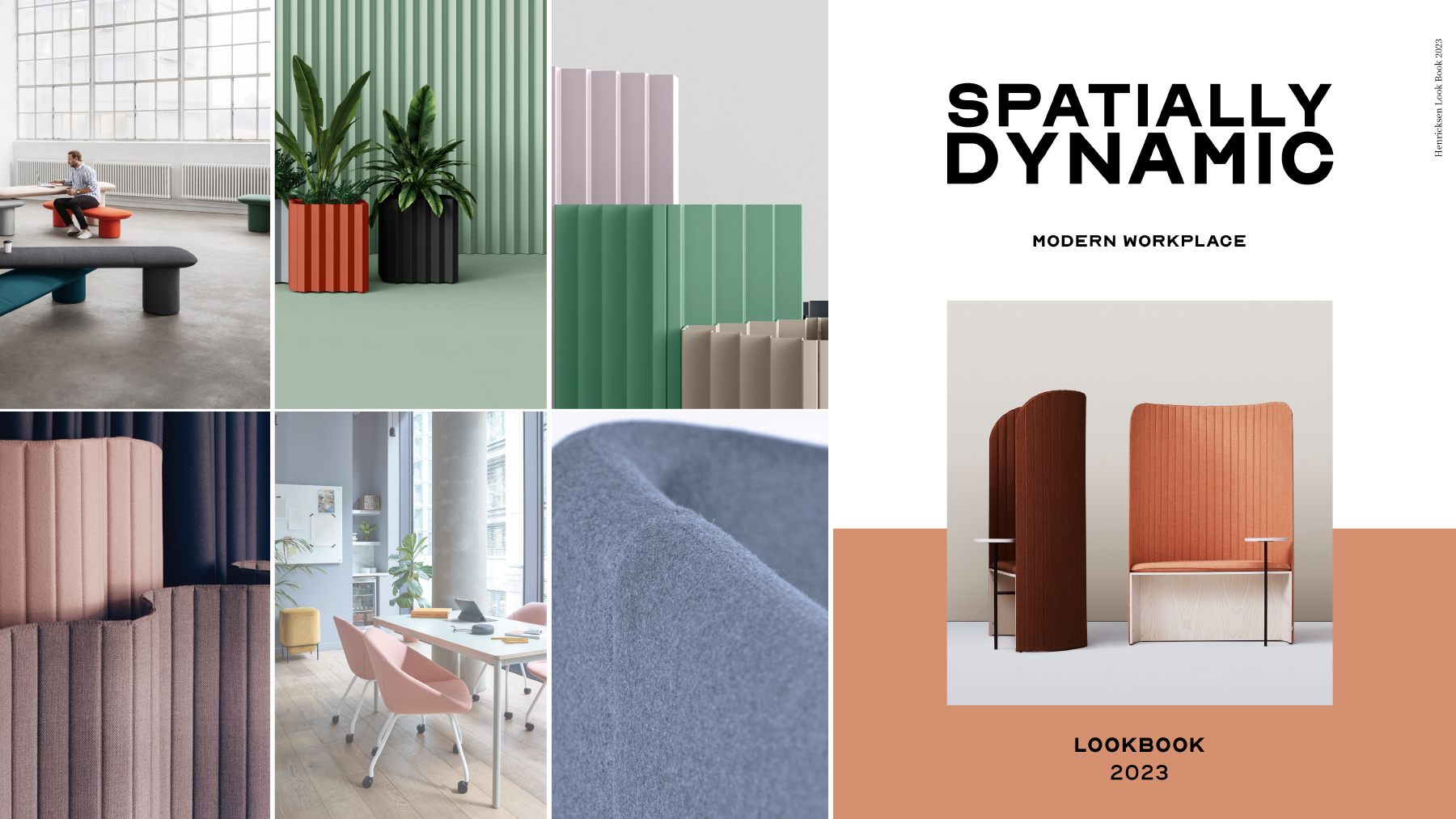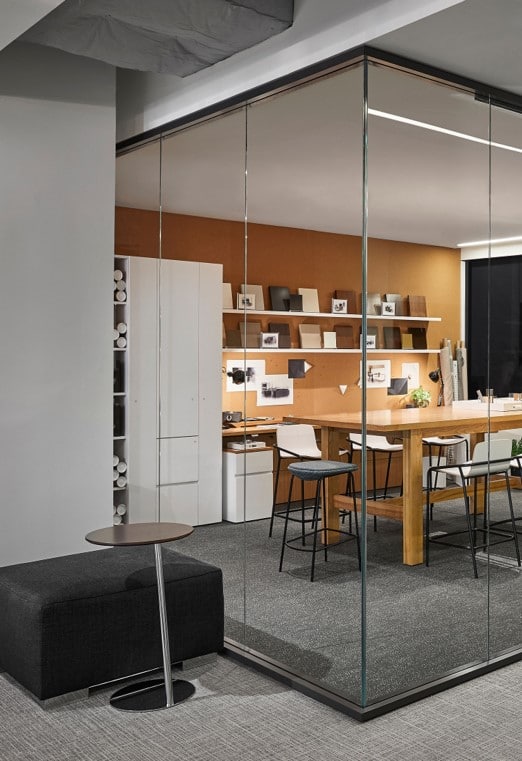Why design your office for mobility?
Studies have shown that employees are away from their assigned workstations at least 60% of the time. This trend is increasing and it’s leading to organizations rethinking their expensive office real estate footprint. If space is only being utilized for a percentage of every day, it only makes sense to cut the ‘waste’ and operate on a more efficient model.
In an age when technology is developing by leaps and bounds on a daily basis, geographic location is becoming less important.

Even when you’re ‘at the office’ you don’t need to be at your desk to be working. Conversely, being out of the office doesn’t mean that you can’t work. It’s a concept that may have been novel a few decades ago, but it’s now a basic fact of life and considered the norm by most Millennials and Gen Z employees.
Everyone is connected, all the time. As a recent Inc.com article puts it, “We live in a hyper connected global world where work/life balance has been obliterated and replaced by work/life integration. This means we take our personal lives to work and our work lives home.” Like it or not, we’re on call, 24/7/365. Whether that’s a good or bad thing is up for debate.
What it has resulted in is a generation in the workforce who crave the autonomy to be mobile. To have a job where their employer allows flexible working arrangements. Workplace flexibility is one of the top ‘asks’ amongs employees and is prized as highly as financial remuneration.
While remote working has been regarded with suspicion in times past, many studies have shown that remote workers can be more motivated and more productive than their office-bound counterparts.
It’s in both employers and employees’ interests to encourage mobile working. It’s already happening, so resisting this global trend could result in stunting growth and innovation. On the other hand, embracing it not only creates greater job satisfaction and employee loyalty, it also makes it easier for organizations to rethink their office footprint by foregoing assigned workstations in favor of shared spaces which can be used on an ‘as needed’ basis, taking full advantage of evolving technologies.
 This model works particularly well in an open plan design where workers can choose where they work when they are in the office. It provides choice, which is key in fostering a feeling of autonomy – also an important factor with today’s workforce. The open plan environment typically incorporates a range of options from individual cubicles to benching to collaborative areas which could feature task seating around a communal work surface, or comfortable, informal seating areas. The keys to making each of these work areas effective include facilitating the technology that allows work to happen both in and outside the office and designing spaces for seamless workflow.
This model works particularly well in an open plan design where workers can choose where they work when they are in the office. It provides choice, which is key in fostering a feeling of autonomy – also an important factor with today’s workforce. The open plan environment typically incorporates a range of options from individual cubicles to benching to collaborative areas which could feature task seating around a communal work surface, or comfortable, informal seating areas. The keys to making each of these work areas effective include facilitating the technology that allows work to happen both in and outside the office and designing spaces for seamless workflow.
Some organizations have resisted adopting a full acceptance of workplace mobility in fear that employees will eschew the office altogether.
A concern is that remote workers are not able to fully participate in the corporate culture and miss out on spontaneous collaboration. While this might be true on occasion, most employees don’t want to be out of the office environment 100% of the time. They want to enjoy the camaraderie and personal interaction that goes hand in hand with being in the office.
What this means is that employers are now paying a lot more attention to their office design. Making the office a place where people want to be is as important as making it efficient. For some great insights into how to adopt a mobility program in your organization, take a look at this white paper by Allsteel on “Mobility.”




